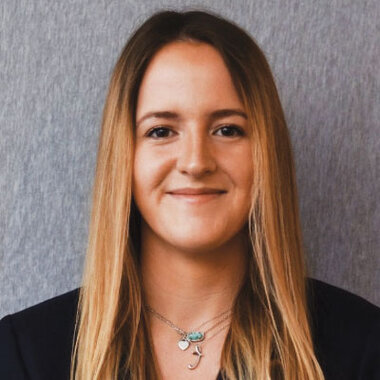Let’s talk CyTOF with Taylor Witte, BS
Taylor Witte, Senior Associate Scientist at 2seventy bio, supports the company’s focus on discovering and developing new classes of cell therapies for cancer by applying knowledge based in an understanding of cancer cell metabolism, genomics and the immune response to tumor cells. Witte talked with us about how she uses CyTOF™ technology as part of her research and what advantages she sees from the high-parameter platform.

Rapid-fire Q&A: We give you a topic, you tell us what’s on your mind.
Why CyTOF technology
CyTOF has expanded our research and our ability to really deeply identify and phenotype rare cell populations. This helps us to thoroughly understand how our CAR T cells are working and identify the immune profile of a specific indication that we're going after.
I love my CyTOF data because it's very reproducible. We can see it very well, and I can have high confidence in that data compared to some of the other high-dimensional assays that we run.
Single-cell analysis of the tumor immune infiltrate
Deep phenotyping gives an indication of how our cells are responding. For our projects developing CAR T cell therapy, we use CyTOF to understand the immunophenotype of those cells. It also enables us to easily change anything in our design that can help us develop the next therapy to have a better outcome for patients.
Fluorescence vs. CyTOF systems
We do still use fluorescence flow cytometry. We have many flow panels, but all of them are limited to a certain phenotype. If you need to identify T cells, you can't because the panel you are using doesn’t have room for more markers. You tend to have to use all of those panels separately and try to combine the data, whereas with CyTOF data we can deeply identify all of those at once. This is especially important when you are using very small samples or precious disease samples. We can identify all of those phenotypes or all of the populations of interest, and then we can comprehensively characterize them, compared to identifying them in several fluorescence panels and trying to understand the impact of those. We can see everything with our CyTOF panel.
More data, less sample
Of course, the smaller samples tend to be the ones that are most interesting. When we have our super healthy, ideal samples, we can run them on any assay we want and combine all the data. But when we have a very small sample that is a disease sample, is very hard to get, is from a rare population or has a rare population, we can run one CyTOF panel and get all of this data instead of only being able to run a few of the fluorescence panels. Even for sequencing we need, I think, five times the amount of cells, and 10 times for other technologies.
All phases of research
We use CyTOF panels across all phases of our research to really understand how our CAR T cell therapies are working, what they look like specifically and the immune profile that they're operating in. We also look at PBMC samples from healthy donors and disease state donors to see how they impact our CAR T cells.
We could use a faster, cheaper flow cytometer, but that doesn't tell us anything. We know our CAR T cells, but we really want to identify and phenotype how they're working, including memory and activation states, etc. It is also important for us to be able to identify any rare populations, especially in disease state donors.
For Research Use Only. Not for use in diagnostic procedures. Patent and License Information: www.standardbio.com/legal/notices. Trademarks: www.standardbio.com/legal/trademarks. Any other trademarks are the sole property of their respective owners. ©2025 Standard BioTools Inc. All rights reserved.
